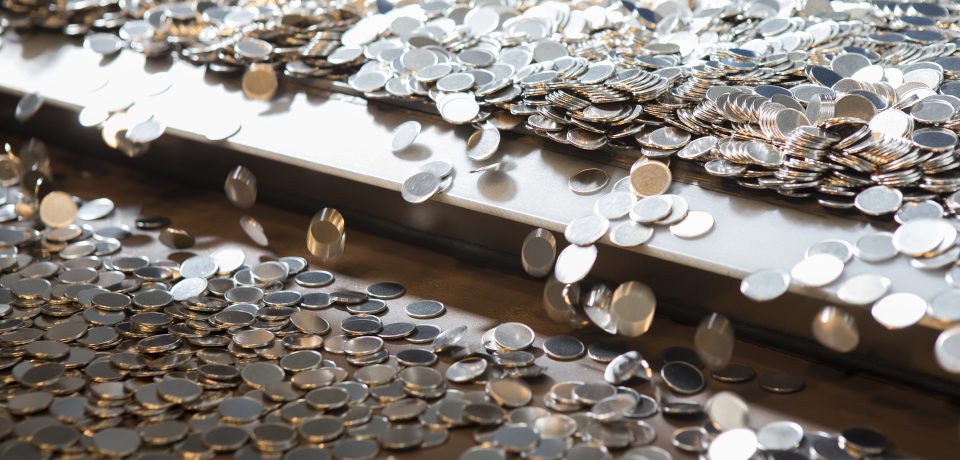The demand for coins and banknotes is increasing in Australia despite COVID-19 cash aversion
[ad_1]
New coin orders from the Royal Australian Mint have increased despite the ongoing COVID-19 pandemic. Photo: Royal Australian Mint.
Demand for coins doubled in Australia over the past year and demand for banknotes tripled, despite pressure on cashless transactions in the wake of the COVID-19 pandemic.
It seems that almost every company now has signs that customers are using cards or electronic transfers instead of cash to reduce the risk of COVID-19 transmissions.
It is therefore surprising that the demand for cash has increased significantly.
The Royal Australian Mint in Canberra said it put around 175 million new coins into circulation in the 2020-2021 financial year.
That is almost double the total of 91 million in 2019-2020.
ALSO READ: New Coin Commemorates the 50th Anniversary of the Battle of Long Khanh
Royal Australian Mint’s chief executive officer Leigh Gordon said it was unexpected.
“We were pretty surprised by the demand for coins we’ve seen over the past 12 months,†he said.
“[It’s] more demand for coins in circulation than we expected during the COVID-19 period. “
The Reserve Bank of Australia (RBA), which oversees banknote production and circulation in the country, also saw demand surge during the pandemic.
An RBA report released in March of this year found that the value of banknotes in circulation rose 17.1 percent to $ 97.3 billion from March 2020 to February 2021.
That is more than three times the average growth of five percent per year over the past ten years.

The Reserve Bank of Australia says people are holding cash, especially $ 50 bills, as a precaution. Photo: Damien Larkins.
Demand grew mainly for larger banknotes, with $ 50 notes accounting for around 70 percent and $ 100 notes accounting for 20 percent.
The RBA attributes the increase to people holding cash or assets as a precautionary measure.
“Demand for cash during the COVID-19 pandemic was likely driven by hoarding behavior,” the report said.
“[Possibly] a general feeling of insecurity or because they were concerned about possible disruptions in electronic payment systems during the pandemic. “
ALSO READ: The Old Highway Inn Remains a Breadalbane Landmark
Mr Gordon said that banknotes and coins are generally preferred for small transactions by the elderly and for teaching financial literacy.
But cash also gives a feeling of security in difficult times.
“People just take their money in their hands during the period of uncertainty,” said Gordon.
“[In] the bushfires we had, there was a time down there on the south coast when the EFTPOS machines were down and there was no power.
“You had to pay for your fuel with cash.”

Most companies moved away from cash transactions during the COVID-19 pandemic. Photo: Damien Larkins.
Most of the additional production was accounted for by the 5-cent, 10-cent, 20-cent, and 50-cent silver coins of lower denomination.
Interestingly, $ 1 coins didn’t see the initial surge in demand.
Mr Gordon said the move by the South Australian government to allow poker machines to accept banknotes in late 2019 caused the anomaly.
“[Gaming organisations] actually put their stocks of $ 1 coins back into the circulating pool and they got reallocated, â€he said. “So we went for a couple of months where there weren’t many $ 1 coin claims.
“But they have started again with the latest bank demands. The system has rebalanced. “

The $ 1 coin was the least popular during the COVID-19 pandemic due to an influx from South Australia. Photo: Royal Australian Mint.
Coin stocks are held by the Royal Australian Mint to accommodate fluctuations in demand and trends.
But it can ramp up production if necessary.
“We can see this buffer stock being depleted and we can start producing it ourselves,” said Gordon.
“We can respond to something like this in three months.”
The Royal Australian Mint does not expect coin demand to return to pre-pandemic levels anytime soon.
“It was a leap to a new level that is slowly decaying,” said Gordon.
“We assume that the increased demand will likely decline, but will continue in greater numbers over the next few years.”
He said the Royal Australian Mint is focused on long-term investments in collectible coins.
Original article by Damien Larkins on The RiotACT.
[ad_2]

